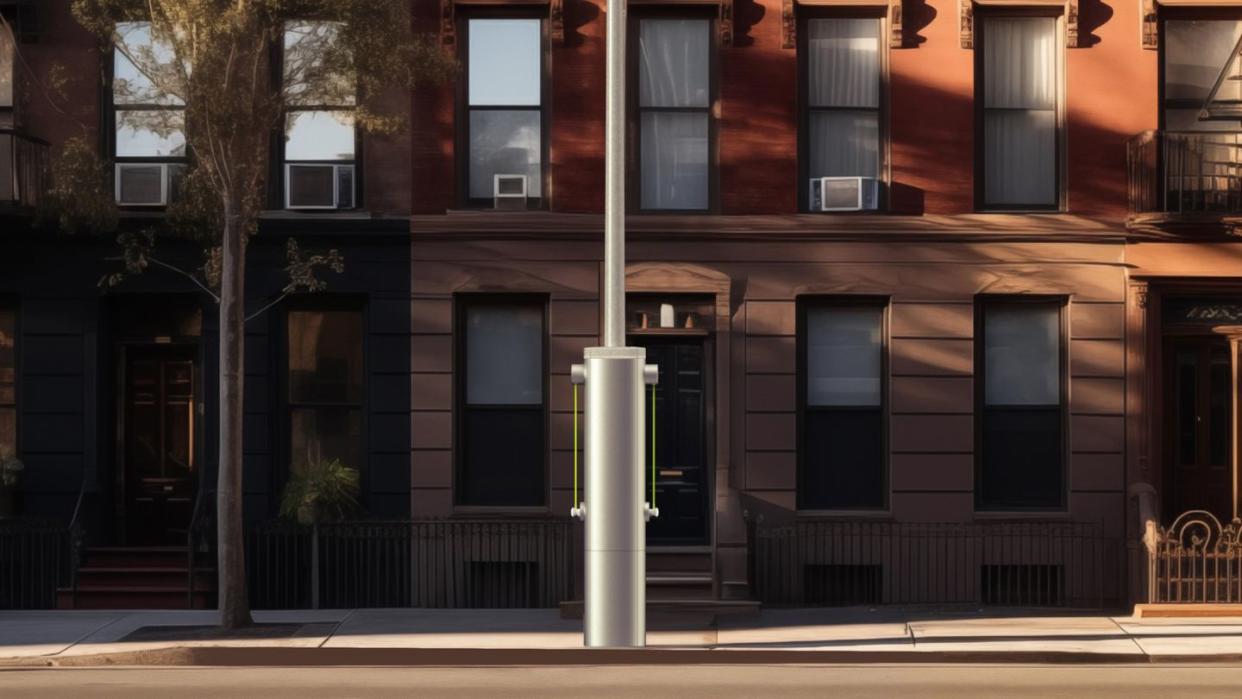Could This Be the Future of EV Charging for Cities?

Voltpost launches an EV charger designed to fit around lampposts, using existing city infrastructure and power supply, as an overnight charging solution for apartment and townhouse residents who may not have a dedicated charging spot.
The charger can be installed in as little as an hour, the company says, and can accommodate up to four EVs.
Voltpost's EV charging station works along with an app, which handles payments and displays charger locations.
As EV makers and charging station builders alike are racing to offer the fastest charging speeds possible, all in an effort to sell greater convenience to those who can afford cars with 800-volt architectures, it's easy to forget that a future where most cars are EVs may not necessarily need the fastest charging speeds. But it will need a lot more chargers.
One type of EV charger that has seen a very limited roll-out, compared to Europe, is the curbside variety.
A company called Voltpost has recently launched sales of a curbside charger that uses an existing lamp post as a base, offering an evolution of an idea we've seen a number of times now. And it's aimed first and foremost at apartment or condo dwellers who may not have a permanent space to charge their EV.
Voltpost's Level 2 charger fits around the base of a lamppost, with installation designed to take as little as an hour to install. The chargers use existing electrical infrastructure, turning each lamppost into a station with two or four charging ports. What's more, the systems offers 20 feet of cable, allowing cars not parked directly beside the lamppost to still reach it.
Payment is handled via a mobile app, which will also allow drivers to reserve spots—something we haven't seen before with Level 2 curbside chargers. The app will also permit drivers to view charging progress remotely, and to view a map of nearby chargers. A Charge Station Management System (CSMS) will also allow charger owners a way to monitor the chargers remotely and to set pricing.
The charging speeds themselves will still be confined to what the nearby electrical infrastructure allows, and having several EVs plugged into the same station, we suspect, could likely slow down the charging process quite a bit.
And of course, the lamppost will still need power itself to provide illumination at night.
Still, with Level 2 charging speeds generally well below 20 kW, an EV would receive a significant boost in the overnight hours, even if we're not talking a full 20-80% recharge for something large.
But the point of these chargers isn't to blast an EV with power in a matter of minutes—they're for overnight and longer-term charging of EVs for nearby residents.
"Many people hesitate to buy an EV due to range anxiety and lack of charging options—imagine what that’s like for people living in cities in multi-unit dwellings and no dedicated parking," said Voltpost advisor Laura Fox, co-founder and managing partner at Streetlife Ventures.
In 2023 Voltpost installed several of its chargers at a DOT parking lot, as part of a system demonstration, with installation taking just one hour.
But in addition to competing with similar concepts that also use existing curbside electric infrastructure, Voltpost will also face competition from standalone, curbside charging stations that offer faster speeds.
Other similar concepts we've seen in recent months use DSLM boxes for the same purpose, or rely on underground grid infrastructure to offer pop-up charging ports.
Will city residents with no access to overnight charging prefer a system of this type, or would they drive their cars to a DC fast-charger with the amenities in the style of a gas station? Let us know what you think.

